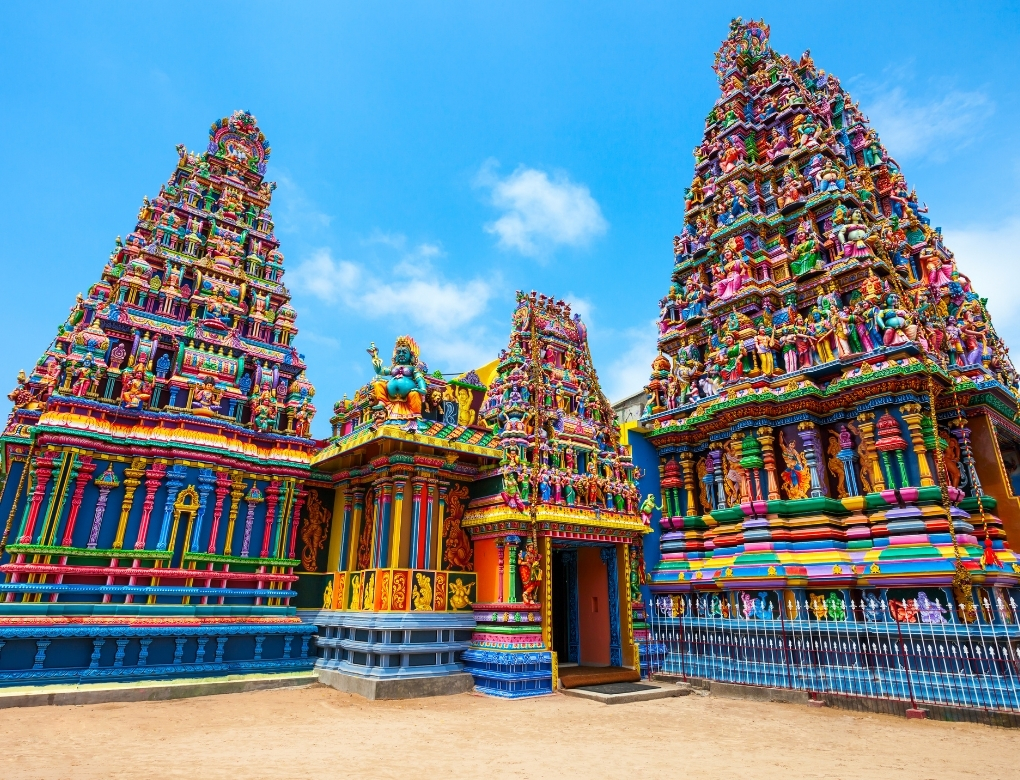
Trincomalee:
A Gateway to Ancient Civilizations and Maritime Power
Trincomalee, located on the northeastern coast of Sri Lanka, is a city with a rich and diverse historical legacy, shaped by its strategic position as a major port and trade hub. Known for its deep, sheltered natural harbor, Trinco, as it’s often called, has witnessed the ebb and flow of numerous civilizations, from ancient kingdoms to colonial powers, and remains one of the most historically significant cities in Sri Lanka.
Trincomalee’s history stretches back over two millennia, and its deep, sheltered harbor has been a key element in its strategic importance since ancient times. The port was mentioned in ancient texts such as the Mahavamsa, Sri Lanka’s great chronicle, where it was known as a vital port for trade and naval operations.
The city is closely associated with the ancient kingdoms of Sri Lanka, particularly the Anuradhapura and Polonnaruwa periods, which flourished between the 3rd century BCE and the 12th century CE. Trincomalee, because of its deep harbor, played a significant role in trade and commerce, both within the island and with international seafaring nations.
One of the most notable historical landmarks in Trincomalee is the Koneswaram Temple, dedicated to Lord Shiva, located on the Swami Rock overlooking the harbor. This temple is believed to have been constructed as early as the 3rd century BCE and has been a site of spiritual significance for Hindus for over two thousand years. The temple, once a grand edifice, was destroyed during colonial periods, though it remains a revered site of worship today. The location, perched high on a rocky promontory, offers sweeping views of the sea and was historically thought to have been a pilgrimage destination and a strategic fortification site due to its natural vantage point.
Trincomalee was also an important center for Buddhism, with Buddhist stupas and rock inscriptions scattered throughout the area, particularly during the reigns of kings from the Anuradhapura era. The Sri Pathrakali Amman Kovil and Uppuveli and Nilaveli beaches, besides their serene beauty, also hold historical significance as places where local communities practiced their faith for centuries
Today, Trincomalee is known not only for its historical significance but also for its natural beauty—its pristine beaches, coral reefs, and tranquil atmosphere make it a popular destination for both local and international tourists. The Marble Bay and Pigeon Island National Park are examples of its unspoiled coastal beauty, while the ancient sites of Koneswaram and Fort Frederick stand as monumental symbols of the city’s long history
Trincomalee shows us that strategic strength is not just in the walls we build, but in the wisdom of choosing the right place. The harbor of Trincomalee, deep and protected, teaches us the value of foresight—knowing when to hold steady and when to open to the world.
Trincomalee whispers that diversity is strength, where Hindu, Buddhist, and colonial legacies intertwine like the tides.In a world that changes, the city teaches us to embrace all parts of our past, for they shape our future.
And, in the quiet of its beaches, Trincomalee calls us to listen to the stories in the waves—history is still alive, moving with the currents, teaching us to be patient, and to see the beauty in what has come before us.
5:00 AM – Depart & Travel to Trincomalee
If traveling from Colombo or Kandy, start early to maximize your time.
7:30 AM – Breakfast in Trincomalee
Enjoy a traditional Sri Lankan breakfast at a seaside café. Try string hoppers, pol roti, or fresh tropical fruit with Ceylon tea.
8:30 AM – Visit Koneswaram Temple 🛕
Explore the Koneswaram Temple, a famous Hindu temple perched on a cliff with breathtaking ocean views.
9:30 AM – Lovers’ Leap Viewpoint 🌊
Just near the temple, visit Lovers’ Leap, a scenic cliff offering panoramic views of the Indian Ocean.
10:00 AM – Fort Frederick & Deer Spotting 🏰🦌
Walk through Fort Frederick, a colonial-era fortress built by the Portuguese and later used by the Dutch and British. Look out for friendly deer roaming inside!
11:00 AM – Visit Marble Beach or Uppuveli Beach 🏝️
Relax on Marble Beach, known for its soft white sand and crystal-clear waters. Alternatively, head to Uppuveli Beach for a peaceful beach experience.
12:30 PM – Seafood Lunch by the Beach
Enjoy fresh seafood at a beachfront restaurant. Try grilled fish, prawns, or Sri Lankan rice & curry.
2:00 PM – Pigeon Island Snorkeling (Optional) 🐠🏝️
If you love adventure, take a boat trip to Pigeon Island National Park, one of Sri Lanka’s best snorkeling spots. Swim with colorful fish, reef sharks, and corals.
3:30 PM – Nilaveli Beach for Relaxation 🌊
Unwind at Nilaveli Beach, a pristine and less crowded beach with golden sand and gentle waves.
5:00 PM – Sunset at Swami Rock 🌅
Visit Swami Rock, a stunning viewpoint near Koneswaram Temple, perfect for catching the sunset.
6:30 PM – Dinner & Relaxation 🍽️
If staying overnight, enjoy a relaxed dinner at a beachfront café with fresh seafood and local specialties.
7:30 PM – Departure or Nightlife in Trincomalee
If heading back, start your journey home. Alternatively, explore the town’s small but lively nightlife scene with beachside bars.
Write Your Review